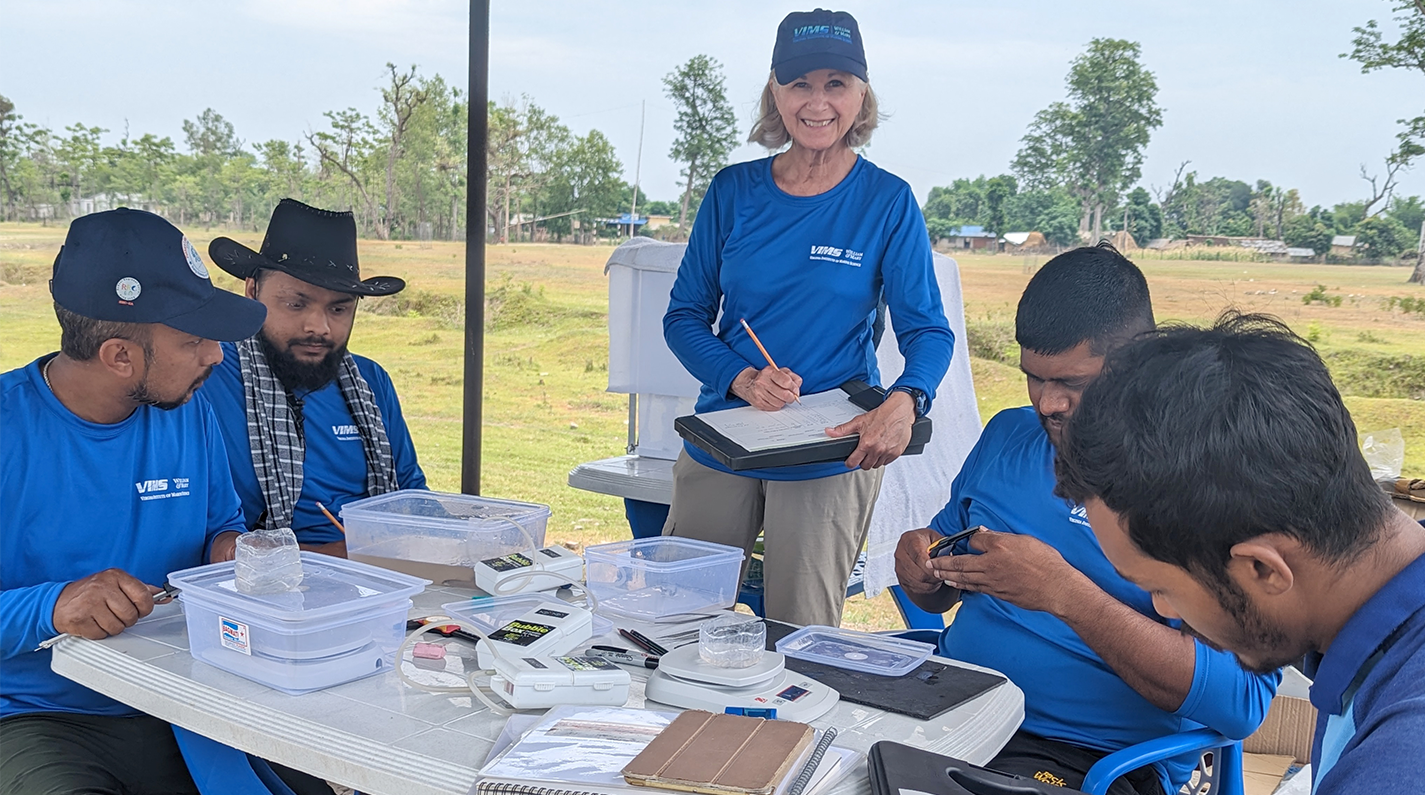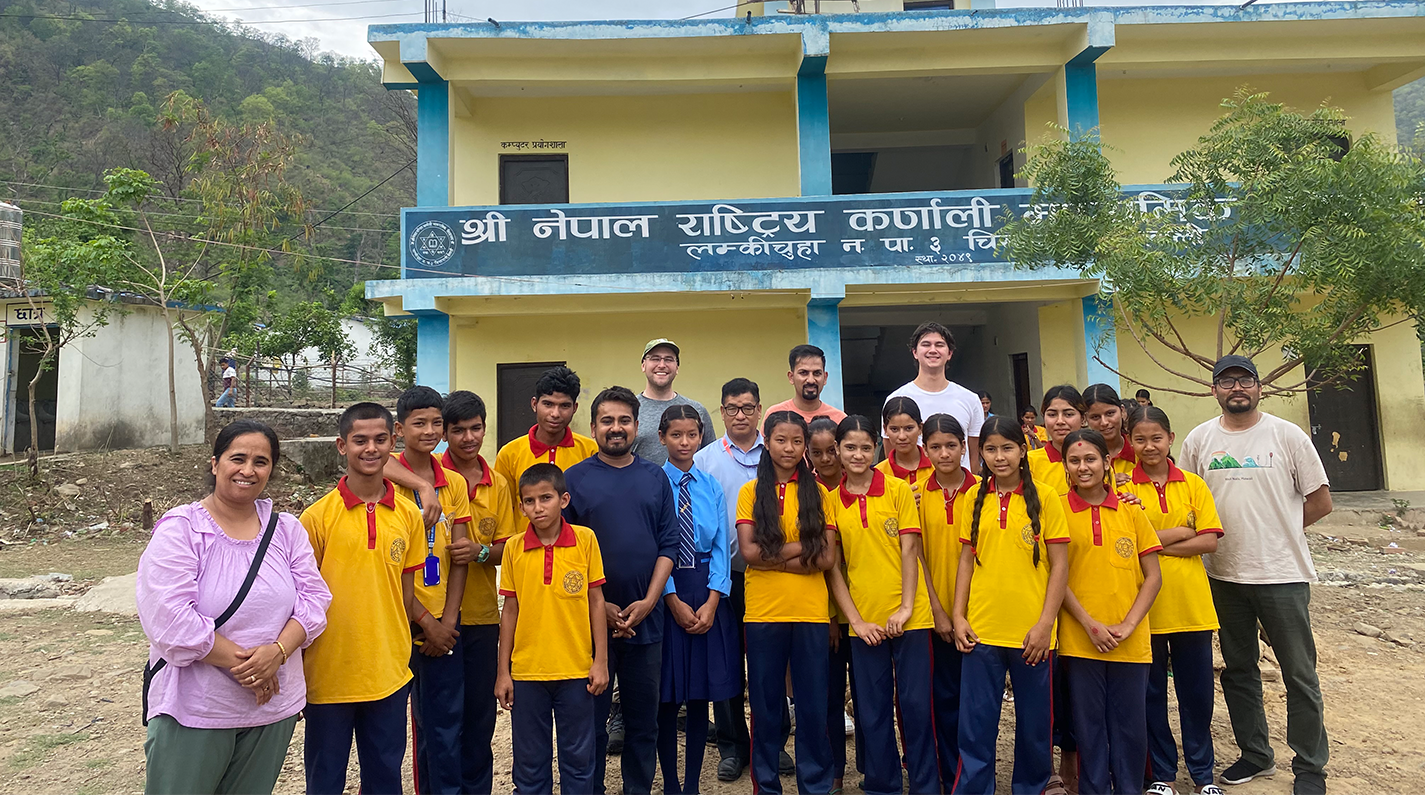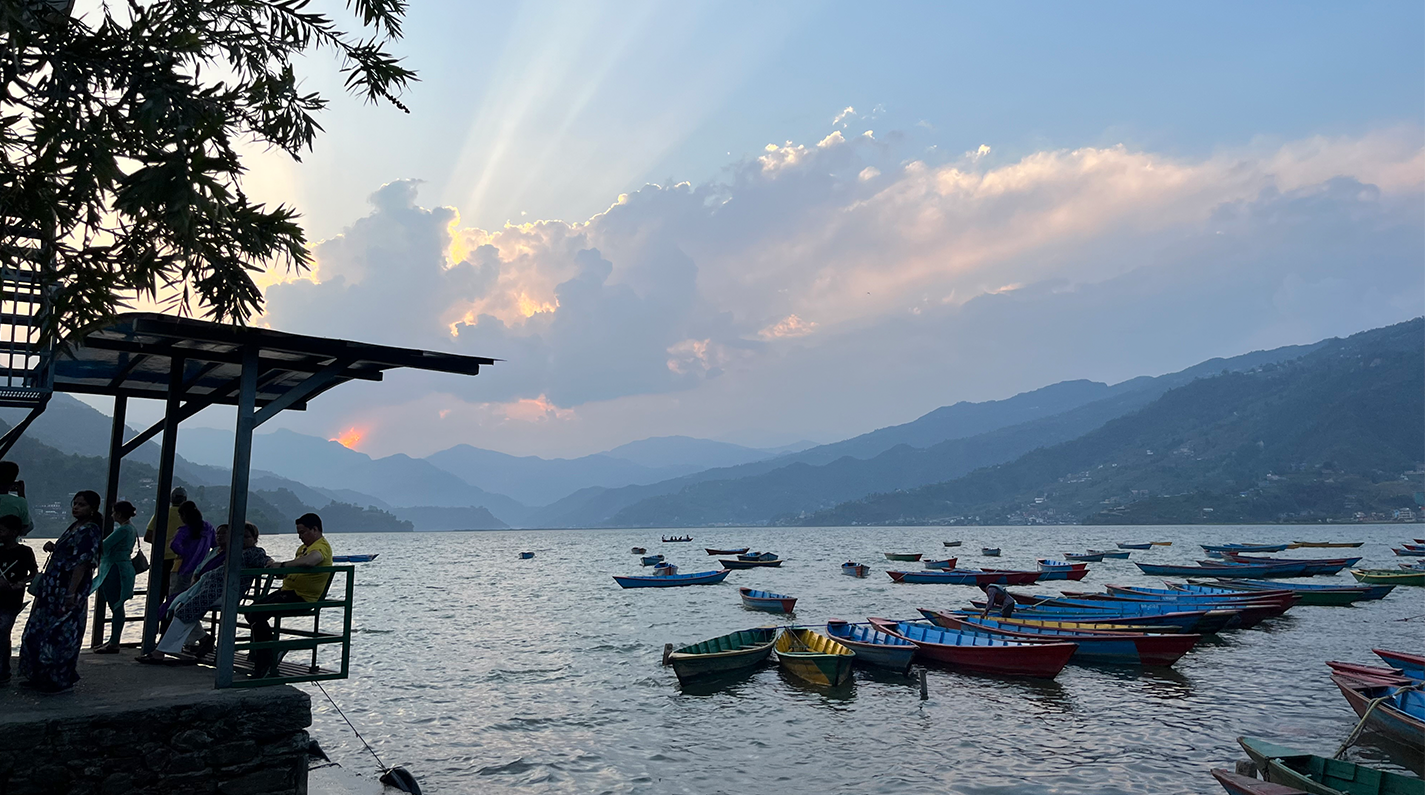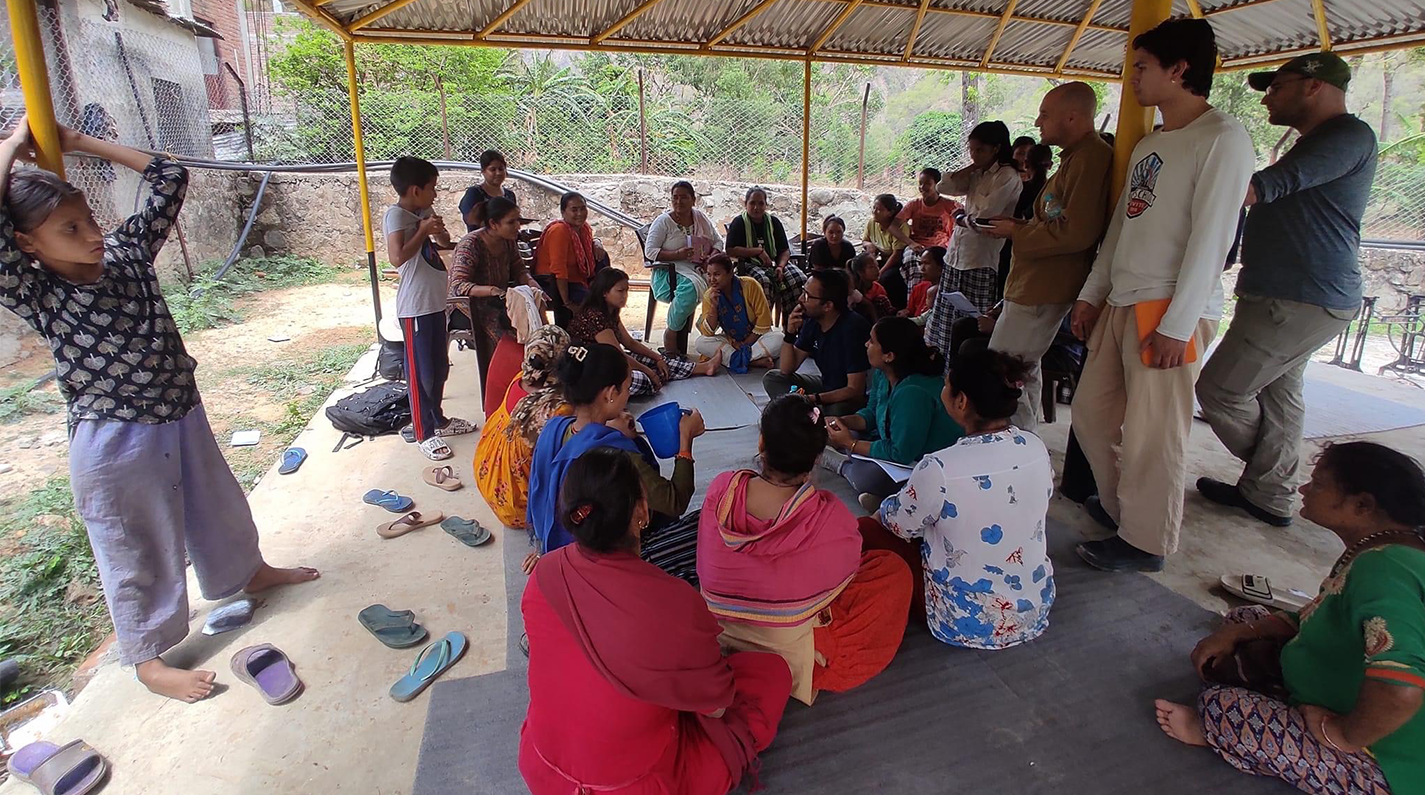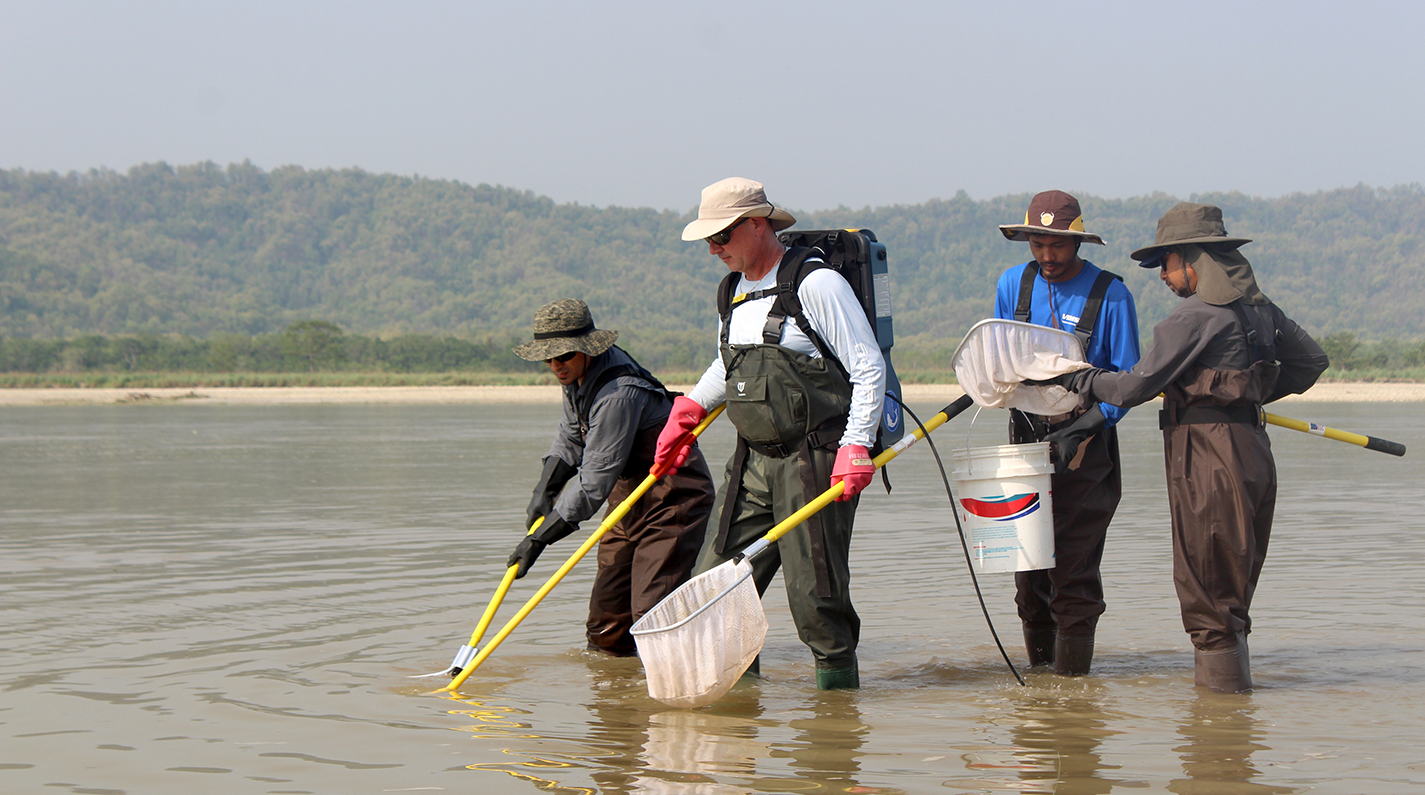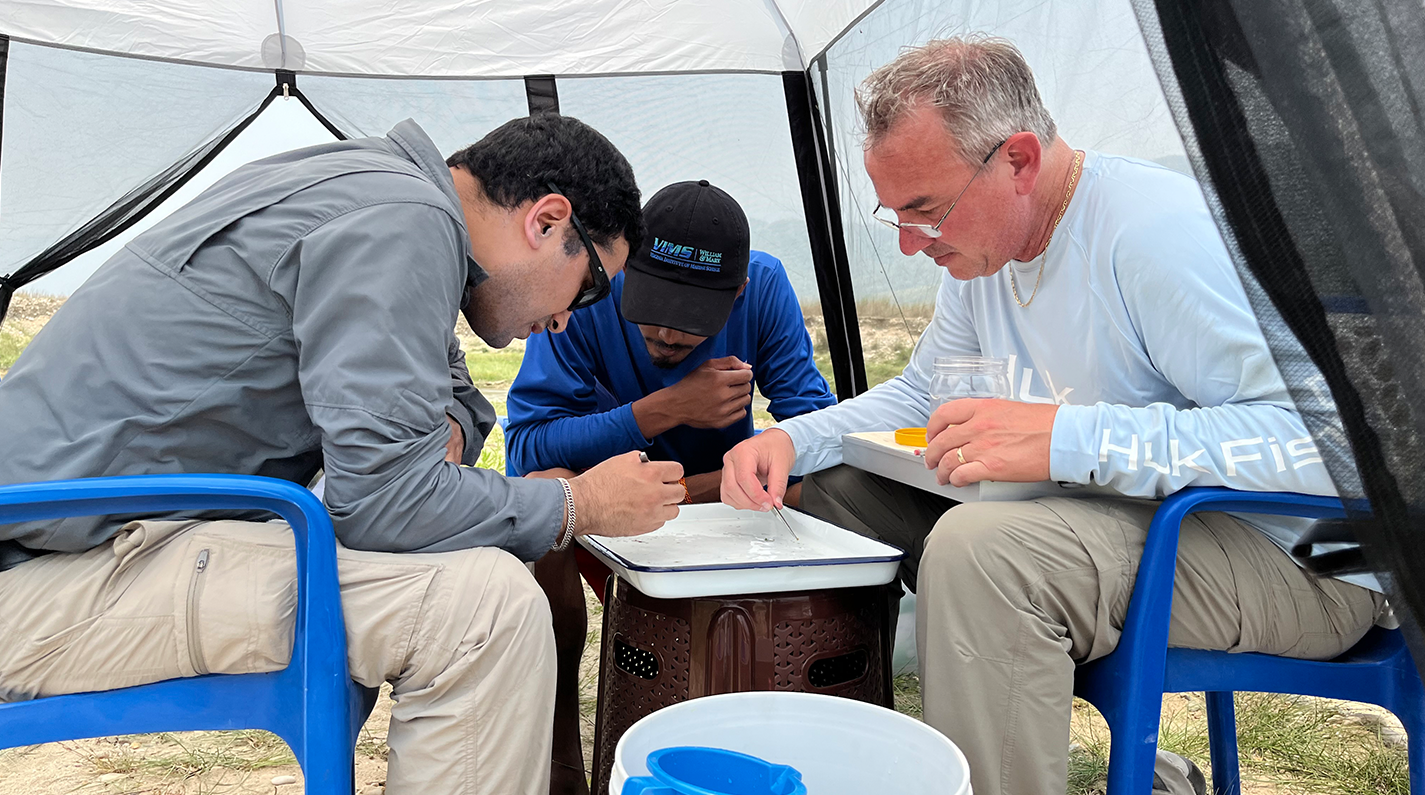Nepal Water Initiative flourishes with multidisciplinary collaboration across W&M
When Professor of Marine Science Mary Fabrizio asked advisee Vaskar Nepal, PhD ’20 whether she could use funds she had been awarded through a Plumeri Award for Faculty Excellence to provide additional opportunities or training before he completed his graduate studies at VIMS, she didn’t suspect it would generate a project that sustained over the course of years, or that it would bring together research partners from across the breadth of studies at William & Mary. True multidisciplinary collaboration is at the heart of what is now known as the Nepal Water Initiative (NWI), a research effort led by scientists and scholars from the Virginia Institute of Marine Science (VIMS), the Global Research Institute (GRI), the Institute for Integrative Conservation (IIC), and the Religious Studies Department.
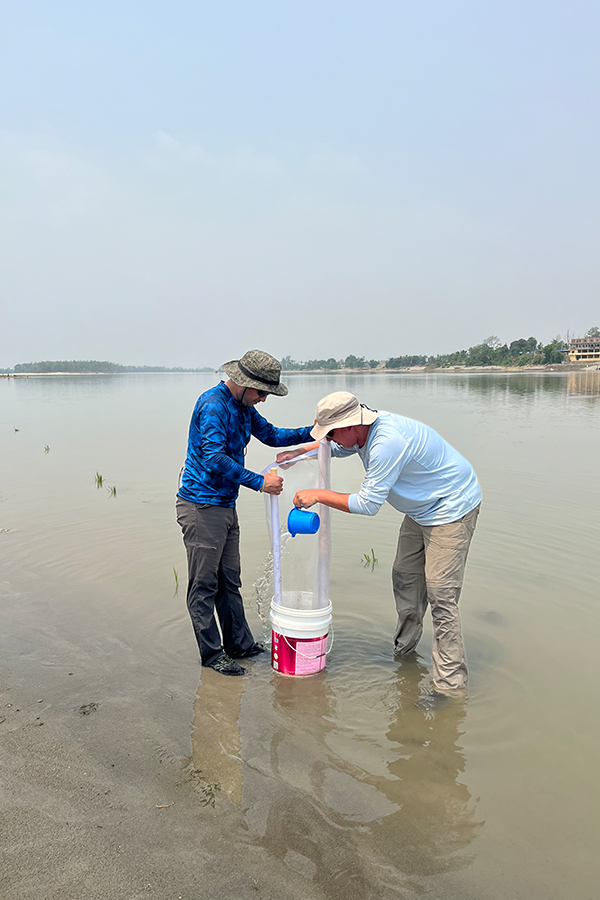 In subsequent discussions about the potential to launch a new project together, Nepal lamented to Fabrizio that he knew very little about the fishes of his home country, Nepal; they were absent from his science curriculum there. Together, he and Fabrizio devised plans for a scientific study to examine whether national parks effectively conserve fish biodiversity in Nepal. More than 20% of the country’s land is protected across its 12 national parks, but the conservation focus is largely on “charismatic megafauna” such as elephants and snow leopards. Fabrizio and Nepal wondered whether these conservation efforts yielded positive externalities for fish populations. During their 2019 fieldwork, which was supported through Fabrizio’s Plumeri Award as well as a Reves Faculty Fellowship, they witnessed firsthand many challenges for fishes in Nepal, including dams that had been constructed without functional fishways, sand and gravel mining in the rivers, pollution, and the use of rivers for religious rituals. This sparked a new question: How were these anthropogenic factors impacting fish biodiversity in Nepal?
In subsequent discussions about the potential to launch a new project together, Nepal lamented to Fabrizio that he knew very little about the fishes of his home country, Nepal; they were absent from his science curriculum there. Together, he and Fabrizio devised plans for a scientific study to examine whether national parks effectively conserve fish biodiversity in Nepal. More than 20% of the country’s land is protected across its 12 national parks, but the conservation focus is largely on “charismatic megafauna” such as elephants and snow leopards. Fabrizio and Nepal wondered whether these conservation efforts yielded positive externalities for fish populations. During their 2019 fieldwork, which was supported through Fabrizio’s Plumeri Award as well as a Reves Faculty Fellowship, they witnessed firsthand many challenges for fishes in Nepal, including dams that had been constructed without functional fishways, sand and gravel mining in the rivers, pollution, and the use of rivers for religious rituals. This sparked a new question: How were these anthropogenic factors impacting fish biodiversity in Nepal?
Vision 2026 fosters collaboration across seemingly disparate fields of global development, community conservation studies, religious studies, and fisheries science
The pandemic hit before Fabrizio and Nepal could bring their Nepalese colleagues to W&M as they had initially planned, but the project stayed at the forefront of Fabrizio’s mind. As chair of the Water Initiative, a cornerstone of W&M’s Vision 2026 strategic plan, VIMS Dean & Director Derek Aday served a bridging function, connecting Fabrizio with potential collaborators: geospatial scientists, experts on Chinese development finance, and conservation scientists from GRI and IIC.
To better understand the cultural beliefs and practices surrounding water resources in Nepal, the team next sought out Associate Professor of Religious Studies Patton Burchett, whose expertise in the culture, history, and religious life of South Asia adds an important perspective. Burchett’s contributions to the NWI are funded through an Interdisciplinary Research Innovation Fund award from the Office of the Provost as well as a Reves Faculty Fellowship. His ethnographic research is focused on using qualitative interviews with Hindu, Buddhist, and diverse indigenous communities to gain insight into their beliefs and practices involving freshwater resources, particularly rivers, in the context of rapid environmental changes brought on by climate change and development projects. Describing a Buddhist practice in which non-native fishes are released into the rivers of Nepal, Fabrizio says, “It’s the perfect example of the nexus between fish ecology, aquatic biodiversity, and religious studies and practices and how they intersect in a place like Nepal.”
The group hit it off immediately and soon found themselves in the thick of planning for a summer of coordinated fieldwork on the ground in Nepal. Before setting out, “We worked together closely to ensure the qualitative research would result in an understanding of community perceptions of changes in fish populations and community perceptions of hydropower development that could inform our fisheries analysis. We know it won’t work to offer recommendations that aren’t grounded in community perceptions.” said Fabrizio. “I often emphasize that our research is a conservation issue at its heart because one of the most striking things I observed in 2019 is how reliant many communities are on fish they capture themselves to put protein on the table."
Initially borne out of mentorship, students continue to benefit from the Nepal Water Initiative
The project that grew out of Fabrizio’s mentorship of Nepal continues to offer training and experiential learning to W&M students. In summer 2023, four W&M undergraduate students traveled to Nepal to conduct fieldwork through GRI’s Summer Fellows Program and IIC’s Conservation Research Program.
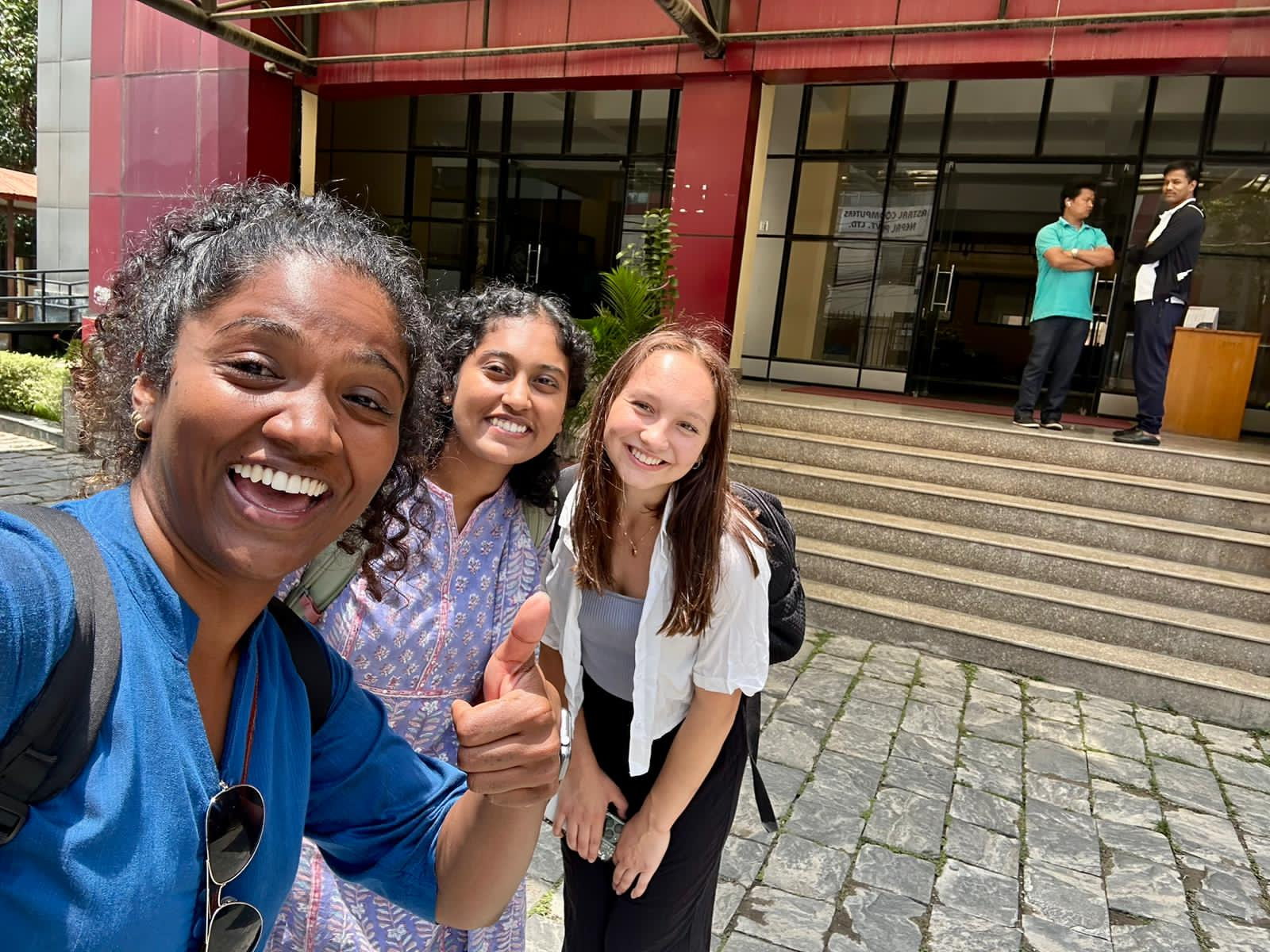 While focused on different aspects of the project, the NWI’s leaders share a belief that undergraduate students can make significant contributions to complex research projects. Under the mentorship of Narayani Sritharan, a GRI postdoctoral fellow, GRI Summer Fellows Kritika Jothishankar ‘25 and Sarah Wozniak ‘25 spent the summer conducting interviews with policymakers and stakeholders in Kathmandu about hydropower development in Nepal, focusing on environmental, social, and governance implications of dams designed for hydropower. Jack E. Hayes ‘24 and Joseph Baca ‘24 worked with IIC’s Geospatial Data Scientist Sapana Lohani to develop community-based strategies for freshwater management in Nepal. In partnership with Nepalese students Srijan Regmi and Roshan Poudel and their faculty mentor Robert Dongol from the Nepal Engineering College, the IIC fellows interacted with communities at four different sites to understand the relationship between water and livelihoods in the region. “My research experiences this summer in Nepal gave me the opportunity to connect with faculty mentors who…encouraged me to be inquisitive and confident to ask questions that would provide me with a greater understanding of my surroundings,” said Jothishankar about her GRI Summer Fellows experience.
While focused on different aspects of the project, the NWI’s leaders share a belief that undergraduate students can make significant contributions to complex research projects. Under the mentorship of Narayani Sritharan, a GRI postdoctoral fellow, GRI Summer Fellows Kritika Jothishankar ‘25 and Sarah Wozniak ‘25 spent the summer conducting interviews with policymakers and stakeholders in Kathmandu about hydropower development in Nepal, focusing on environmental, social, and governance implications of dams designed for hydropower. Jack E. Hayes ‘24 and Joseph Baca ‘24 worked with IIC’s Geospatial Data Scientist Sapana Lohani to develop community-based strategies for freshwater management in Nepal. In partnership with Nepalese students Srijan Regmi and Roshan Poudel and their faculty mentor Robert Dongol from the Nepal Engineering College, the IIC fellows interacted with communities at four different sites to understand the relationship between water and livelihoods in the region. “My research experiences this summer in Nepal gave me the opportunity to connect with faculty mentors who…encouraged me to be inquisitive and confident to ask questions that would provide me with a greater understanding of my surroundings,” said Jothishankar about her GRI Summer Fellows experience.
Expanding research agenda will propel the NWI into 2024 and beyond
The group is already working to expand their research, with the 2019 and 2023 fieldwork serving as a basis for new funding proposals. Earlier this month, the team expanded with the addition of a GRI-VIMS postdoctoral fellow, Dr. Sara Sayedi, who will use geospatial analysis to better understand water resources and land use changes in Nepal. In summer 2024, the team will be back on the ground in Nepal, with plans already underway to train Nepalese university students in fisheries field techniques and to conduct additional qualitative research.
Editor’s note: Water is one of four cornerstone initiatives in W&M’s Vision 2026 strategic plan. Visit the Vision 2026 website to learn more.
***
VIMS, GRI, and IIC will host special guest Rinzin Phunjok Lama, who was named Time Next Generation Leader, on the William & Mary and VIMS campuses on October 26-27 for two public lectures, “Biodiversity Conservation in Nepal's Trans-Himalaya.” Lama is a native of the Nyinba community in the Humla district of Nepal and he is the founder and Principal Investigator of the project Upper Karnali Landscape Initiative, which focuses on strengthening community-based biodiversity conservation in his home region. Information about the 10/26 talk on W&M’s main campus is available here. Information about the 10/27 talk on VIMS’ Gloucester Point campus is available here.


